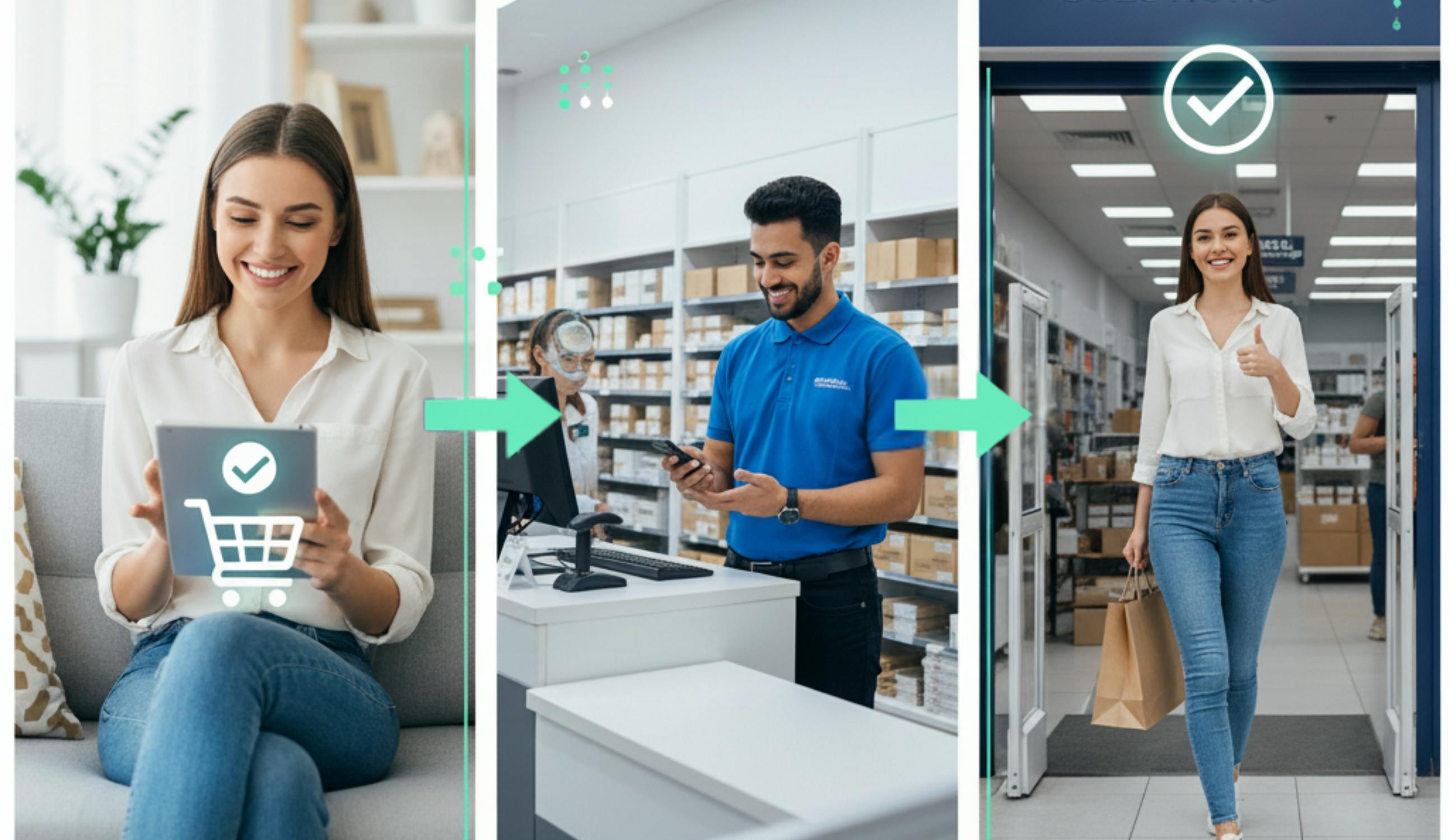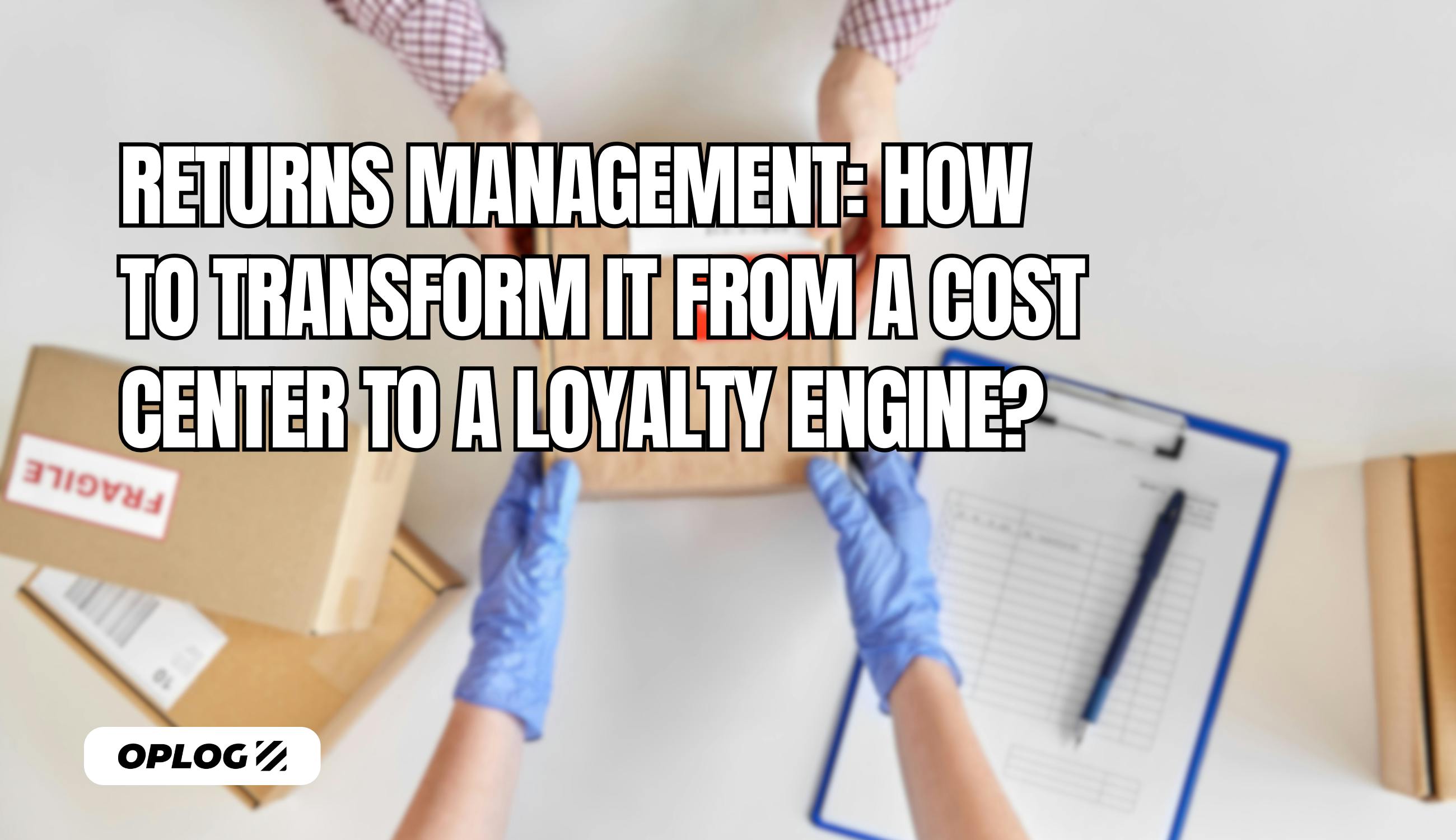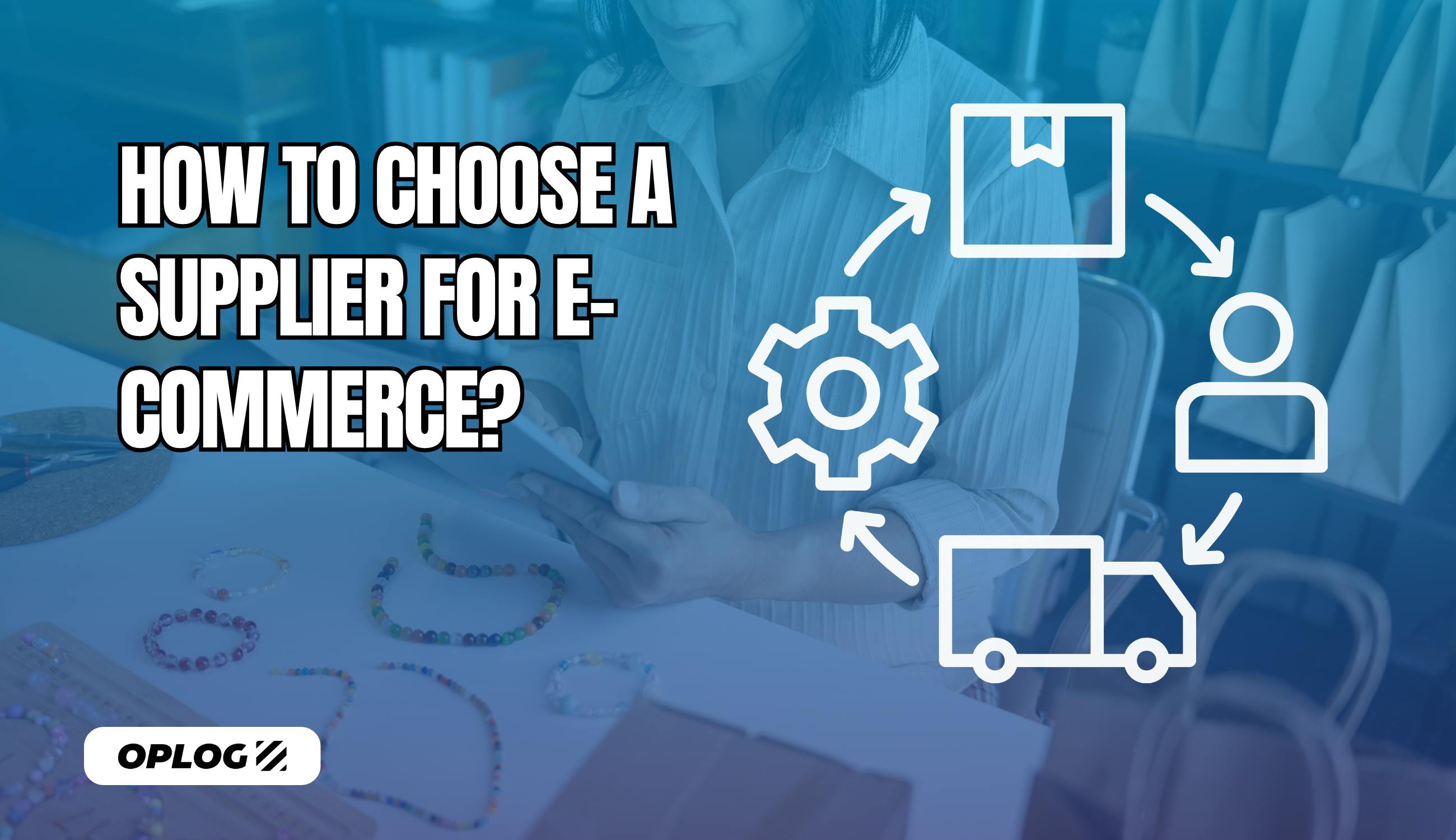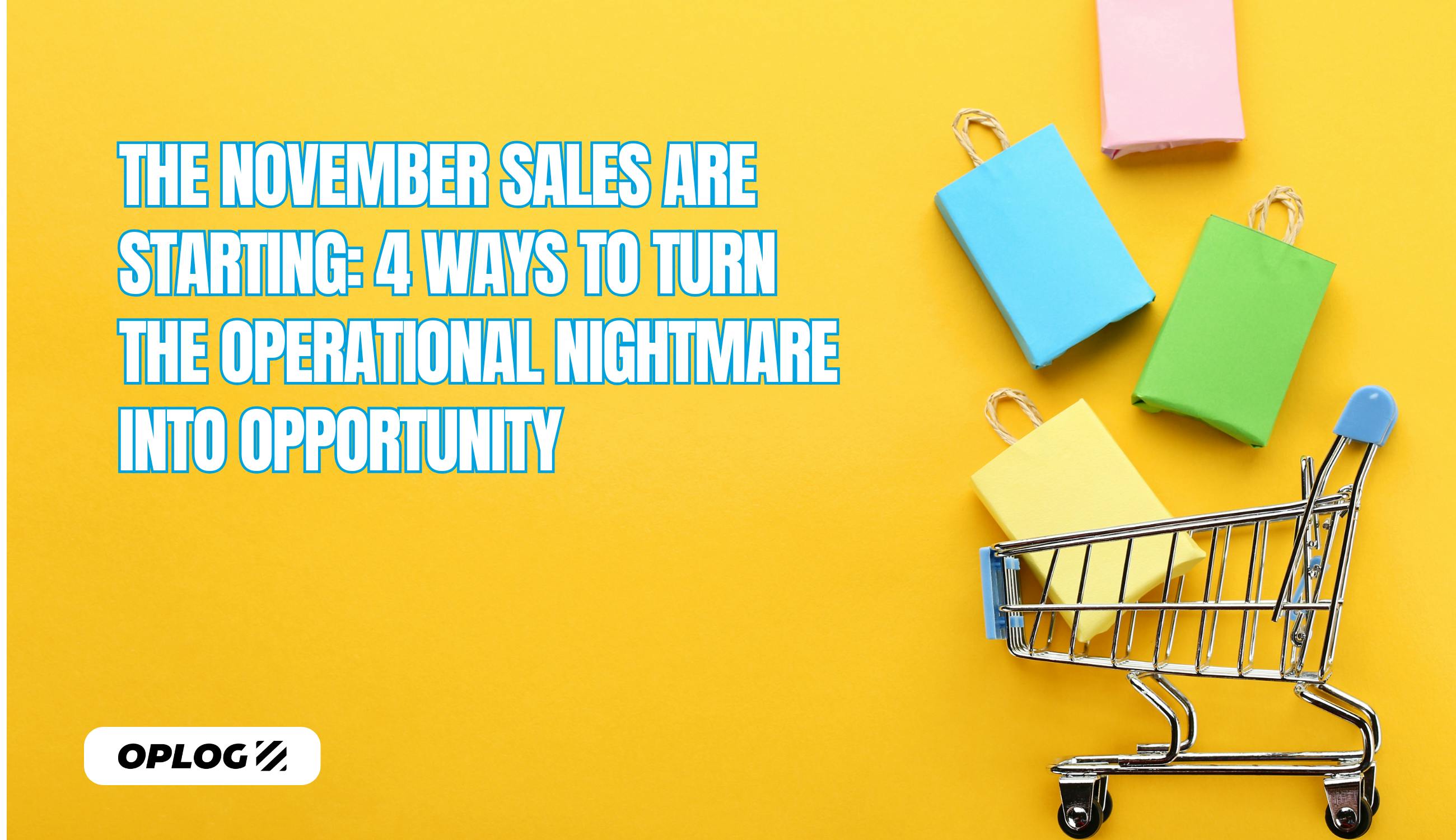2026 E-Commerce Logistics Trends: The Future Is Arriving Faster Than You Think
In the e-commerce world, time moves at a warp speed compared to the normal world. What we called "innovation" yesterday becomes "standard" today, and "obsolete" tomorrow. As we open the door to 2025, visionary brands are already engineering their 2026 e-commerce logistics strategies. Why? Because logistics is no longer just about moving a product from Point A to Point B; it is your brand's growth engine, the key to customer loyalty, and the critical compass for your globalization journey.
At OPLOG, we see logistics not merely as an operation, but as an art form blended with technology. Let’s take a deep dive into the 2026 trends that will redefine the concept of e-commerce logistics and what they mean for your business.
1. The Robotics Revolution and the "Zero Error" Expectation

As we head toward 2026, there is simply no room for human error in e-commerce logistics processes. Your customers expect 100% accuracy when they open that box—regardless of the color, size, or model they ordered. This is where game-changing technology steps in: Autonomous Mobile Robots (AMR) and Robotic Fulfillment.
Once viewed as "technology of the distant future," robotic systems are now a prerequisite for survival in the competitive landscape. TARQAN, our proprietary technology and source of pride at OPLOG, answers this exact need. TARQAN technology delivers 99.9%+ accuracy in picking operations while increasing operational speed by over 40% compared to manual processes.
The biggest shift we will see in 2026 trends is the democratization of robotics; these technologies will become accessible not just for massive "Enterprise" firms, but for growing SMBs as well. In the model we offer, even a startup can wield the robotic power within OPLOG’s warehouses, managing their operations as if they possess the infrastructure of a tech giant.
2. Flexibility is the New "Loyalty": Pay-As-You-Go (PAYG)

You know the biggest pain point in the traditional 3PL (Third-Party Logistics) mindset: Long-term, binding, rigid contracts and fixed costs you’re forced to pay even during dead seasons. In 2026 trends, this "old school" logistics approach is fading into history.
Fluctuation is in the nature of e-commerce. Your orders might hit the ceiling on Black Friday and quiet down in February. So, why should you anchor your warehouse rent or staffing costs to your busiest period?
Future e-commerce business models require aligning costs with revenue. The "True PAYG" (Pay-As-You-Go) model, pioneered by OPLOG, sits right at the center of this trend. Instead of paying a fixed fee for storage space, shelves, or staff, you pay only for the transactions you actually generate. This converts your fixed logistics costs into variable expenses, protecting your cash flow and growth capital. In 2026, "flexibility," not "commitment," will be the winner.
3. Logistics Without Borders: Globalization and Localization

"Cross-border" e-commerce is no longer an "option"; it is a necessity for growth-oriented brands. However, looking at 2026 projections, simply shipping abroad (cross-border shipping) won't be enough. The trend is shifting towards acting like a local player (localization) in the target market.
If you want to compete in giant markets like the UK and Germany (DE), your delivery times and return processes must rival those of local competitors. Sending individual packages from Turkey can damage the customer experience due to customs processes and long delivery times.
This is where the strategic positioning of fulfillment networks comes into play. The bridge OPLOG has built between its warehouses in Turkey, the UK, and Germany allows brands to pre-position their inventory in these countries. This means a Turkish brand can offer next-day delivery to a customer in London. Professional management of complex post-Brexit customs and VAT processes allows brands to focus solely on sales, leaving the bureaucracy to their logistics partner. The winners of 2026 will be those who view the world as a single marketplace.
4. Tech Integration and the Era of "Visibility"

The biggest fear in warehousing and logistics processes is "losing control." Questions like "Where is my product?", "Is my stock low?", or "Has my return been processed?" can keep e-commerce managers up at night. The 2026 e-commerce logistics trends are built on "radical transparency."
It is no longer acceptable for your logistics operation to be disconnected from your various marketplaces (Amazon, Shopify, Trendyol, etc.). Systems where everything is managed from a single screen with real-time data flow are becoming the standard.
Our OPLOG ONE platform was designed with this exact vision. Whether in Istanbul, Munich, or London, you can manage your entire inventory from a single panel and track your orders in real-time.
Instead of getting lost between different software, you can get a complete X-ray of your operation with integrated technologies like Maestro WMS(Warehouse Management System) and Roadrunner TMS (Transportation Management System). Technology prevents logistics from being a "black box" and transforms it into a transparent aquarium.
5. Customer-Agnostic Resource Utilization

Sustainability and efficiency are non-negotiable topics for 2026. In traditional logistics, separate spaces, separate shelves, and separate teams were allocated for each client. This led to inefficient space usage and wasted resources.
The new generation fulfillment concept operates on the logic of the "Sharing Economy." The Customer-Agnostic architecture adopted by OPLOG ensures that resources, space, and automation within the warehouse are dynamically optimized across all customers. What does this mean?
- Efficiency: Empty capacity during one brand's quiet period is used for another brand's peak period.
- Cost Advantage: Unit costs decrease because resources are optimized.
- Scalability: You never hear the phrase "we ran out of space" when your business grows.
This model not only lowers costs but also creates a more sustainable logistics operation by eliminating idle capacity.
6. Omnichannel Excellence

E-commerce is no longer just about a website. Social media sales, physical stores, marketplaces, B2B wholesale... They are all intertwined. In 2026, e-commerce logistics must manage these complex channels like a single orchestra conductor.
A customer might want to return an item bought online to a physical store, or you might need to use your store stock to fulfill an online order. While traditional logistics structures cannot provide this flexibility, tech-focused fulfillment providers are tearing down the walls between physical and digital channels.
At OPLOG, we give brands "Omnichannel" power by managing both store and e-commerce stocks from a single pool, especially in sectors requiring complex vertical expertise like footwear and fashion.
Conclusion: Are You Ready for the Future?
2026 might seem like a distant date, but transforming your logistics infrastructure is a step that must be taken today. E-commerce logistics is no longer just about warehousing and shipping; it is your brand's capacity to keep the promise you made to the customer.
Whether you are an SMB aiming to grow in Turkey or an Enterprise brand preparing to conquer Europe, what you need are not clumsy structures, but a partner that has engraved technology into its DNA, runs on robotic power, and can flex alongside you.
At OPLOG, we don't just carry boxes; we carry your brand's potential. Meet with us to experience the logistics of the future today and elevate your business to 2026 standards.
Remember, if logistics stops, trade stops. With us, your trade never stops. Contact us now to get detailed information about OPLOG and perfect your fulfillment operations!





